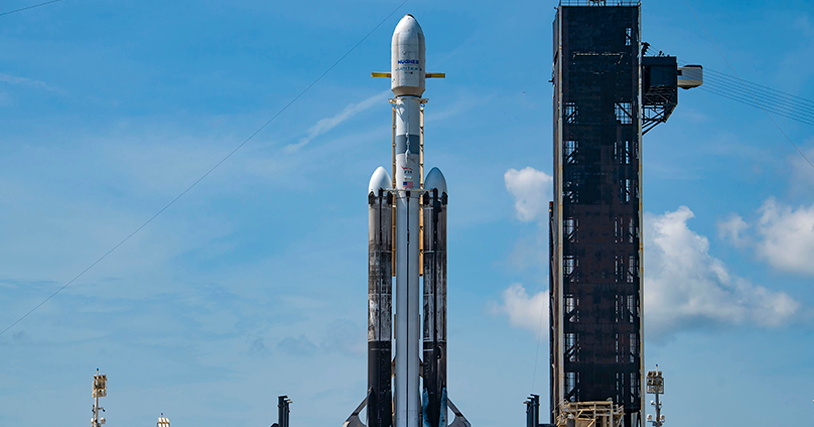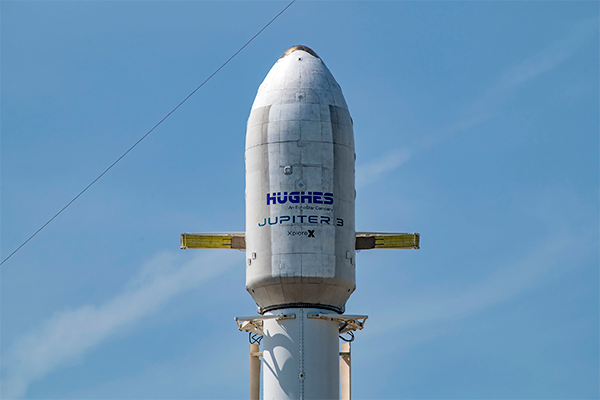
After extensive vibration, acoustic and thermal vacuum testing, followed by a cross-country flight aboard an AN-124-100 aircraft, JUPITER™ 3 arrived at the launch site in Kennedy Space Center, Florida. Before its historic launch, the satellite underwent a series of launch preparations, including fueling and encapsulation.
Fueling a Satellite for Launch and Beyond
Fueling a satellite heading 22,300 miles into orbit isn’t as straightforward as pulling up to a gas station and filling up. And just so we’re clear: the fuel onboard the satellite is not the same as the fuel that powers the rocket itself. Rather, the satellite uses two different propulsion systems. One is chemical propellant, used for its high thrust to quickly raise the orbit of the satellite after the rocket deposits the satellite into a transfer orbit; the satellite then uses highly efficient electric thrusters that ionize xenon to produce a low thrust to finalize the orbit and is also used for station-keeping throughout the lifetime of the satellite.
Fill It Up!
To fuel the satellite, the first task for the launch site team is to move JUPITER 3 out of its shipping container and onto the handling dolly inside the fueling cell. Designed specifically for this program, JUPITER 3’s shipping container is unique because it allows for easy rotation of the satellite from its horizontal transport configuration to vertical. Once the lid is off, a dolly inside rotates the satellite to a vertical configuration, putting it in position to be lifted and lowered into the fueling cell. To contain the hazardous fueling operation safely, the fueling cell is reinforced with stainless steel edges, flame retardant curtains and fire suppressant systems on the ceiling.
While it sounds simple enough, nothing about moving a 9-ton satellite is simple! The process involves using a lifting jig to carefully extract the vertical satellite from the shipping container, hoist it up 30-40 feet in the air over a beam and then securely lower it into position on the handling dolly. The whole operation lasts about 2.5 hours.
At that point, the four-day fueling operation begins in earnest under the expert direction of the propulsion team from Maxar, the manufacturer of JUPITER 3. On the first day, the satellite is moved onto the load ring, which measures how much fuel is actually loaded onboard. Over the next three days, certified handlers dressed in specially designed Self Contained Atmospheric Protective Ensemble (SCAPE) suits methodically load the chemical propellant into the satellite’s fuel tanks.
Encapsulation & Integration to the Launch Vehicle
Once the fuel is loaded, JUPITER 3 is ready to be encapsulated in the payload processing facility – that’s the process of bringing the two halves of the SpaceX’s payload fairings together around the satellite. The fairings enclose the satellite, acting as a protective shield against the elements while on Earth and during the launch process.
With the satellite fueled and encapsulated in the fairings, JUPITER 3 is next integrated atop the launch vehicle. To do this, the fairings were once again rotated horizontally, before being lifted up almost to the ceiling of the integration facility. The launch vehicle was inserted underneath and then secured into place, ready to be rolled out to the launch pad for its historic mission.
Once Falcon Heavy was integrated onto the transporter erector, it was rolled out to the launch pad before launch for final spacecraft verifications and count-down operations.
Follow along with us on the Journey to JUPITER 3 as we track the satellite’s progress.
